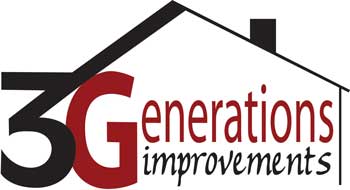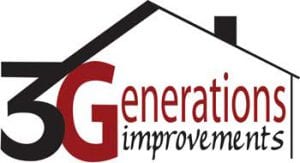Please read the below article released by James Hardie about the return on investment numbers when you install Fiber Cement. Fortunately, the ROI numbers for most completed home improvements in Northern California are even better than the national averages. Keep in mind these numbers are the costs recouped if home is sold, however, if the material has energy efficient / insulating properties or less maintenance costs than your current siding, you would have to factor in these savings in order to get a true cost vs value number. Please see below for the 2011-2012 Cost vs. Value Return on Investment numbers in the Northern California Market:
- Northern California – From Bay Area to Sacramento
- Fiber Cement – 85.2% vs 78% Nationally
- Insulated Vinyl Siding – 71.4% vs 69.6% Nationally
- Vinyl Siding – 71.2% vs 69.5% Nationally
- Vinyl Windows – 81.4% vs 68% Nationally
- Wood Windows – 76.2% vs 64.1% Nationally
- Deck Addition (wood) – 81.9% vs 70.1% Nationally
- Deck Addition (composite) – 75.2% vs 62.8% Nationally
Fiber Cement Siding Tops Chart as Smartest Home Improvement
Remodeling magazine’s 2011-2012 “Cost vs. Value” report names fiber cement siding as the #1 project for return on investment results.
CHICAGO, November 11,2011- James Hardie Building Products Inc. (JHX: US) a leading manufacturer of exterior siding, panel and trim, receives third-party validation that siding a home with fiber cement products garners a higher return on investment than any other home improvement, including re-siding with vinyl siding.Remodeling magazine’s “Cost vs. Value” report compares the financial investment of a remodeling project to the increased resale value of the house. Since its inclusion in 2005, fiber cement siding has reigned as the leader in value, beating out 35 other common remodeling projects, ranging from adding additional rooms, renovating bathrooms and kitchens and adding a deck.
The National Association of Realtors published the finding that homeowners are increasingly staying in their current houses. According to their survey conducted last year , just 11 percent of sellers had owned their home for three years or less, down from 30 percent in 2006. Instead of buying a different house for more square footage or a more appealing exterior, homeowners are relying on improvements to transform their existing house. The “Cost vs. Value” data gives homeowners reassurance that certain renovations are likely to positively affect their resale value when they do choose to sell. James Hardie retains its value for decades because the products are durable and require minimal maintenance.
Fiber cement siding not only delivers a solid return on investment, it provides an immediate, visually impactful result. “Our products are on millions of homes in America. We are pleased not just by the immediate positive reaction that owners have when they re-side or purchase a home with Hardie, but also by homeowners’ relief that the product requires little maintenance and their delight when the siding maintains its value during the resale process,” explains Marc Setty, Marketing Manager for James Hardie Building Products. The impressive visual impact of re-siding combined with a high return on investment value is the primary reason why fiber cement siding ranked as the top material installed by remodelers in the last year, according to research conducted by Professional Remodeler.
Fiber cement siding has remained a perennial performer in Remodeling magazine’s “Cost vs. Value” report, which has been published for more than 20 years. Fiber cement siding provides a significant 78% return on the investment. In contrast, a costly master suite addition only produces a 50.5% return. A kitchen remodel is listed as garnering only a 57.4% return on investment in this year’s report. Siding replacement with vinyl siding only delivers a 69.5% return. In fact, the gap between fiber cement siding’s return on investment and that of vinyl siding has more than doubled in the last 2 years of the report. James Hardie products include innovations such as being engineered for specific climates and ColorPlus® Technology, which is a multi-coat, baked-on factory finish. James Hardie siding is five times thicker than vinyl and is classified as non-combustible exterior, extending the protection to fire as well. James Hardie offers HardiePlank® lap siding, HardieShingle® siding, HardiePanel® vertical siding, HardieTrim® boards, and HardieSoffit® panels, as well as HardieWrap® weather barrier and HardieBacker® board.
About James Hardie
James Hardie has been manufacturing building products for more than 100 years. It introduced fiber cement siding products to the U.S. in the early 90s as a durable, low-maintenance alternative to wood and vinyl. James Hardie products areEngineered for Climate ™, delivering specific performance attributes relative to the climate where the product is being used. Other products include HardieWrap™ weather barrier and HardieBacker® backer board. Currently installed on more than 4 million homes, James Hardie products have earned a favorable reputation within the industry and have been specified in some of the country’s most prestigious projects.

